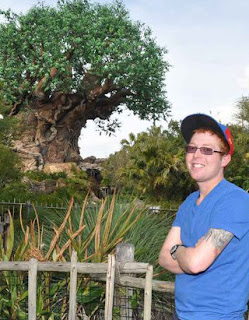
Our world is facing many challenges these days. The statistics are often overwhelming and can leave us wondering, "well, what can I do?"
The Scouts of the World Award (SOTW) shows us that, while no single project can address all of the challenges our world faces, combined, our work can contribute to real global change. It is also about developing both the confidence and understanding in Canadian youth to become active agents of improving the lives of others, through a program based on hands-on education and experience.
You may not be able to solve all the problems in the world, but even by reaching out to one community, you can make a dramatic change. This is where you come in!
The Scouts of the World Award program is geared towards youth aged 14-26 and set up in three phases: Discovery, Voluntary Service, and Reporting and Recognition. In the Discovery Phase, where you will learn more about the issue you want to address, respond to its impact, and develop an action plan to make a difference. You'll become an expert in the topic of your interest, centred on the United Nations Millennium Development Goals (UN-MDG), after learning from people who are already experts in the field. For Madagascar, we'll be focusing on UN-MDG #2 and #3 (
check out our past blog on how we're working towards those!)
Once you complete your Discovery, you will have a chance to put together an Action Plan, which outlines exactly what you intend to do to reach your goal. After that is the Voluntary Service Phase. This is when you can take all that you know and have learned and put it into action. You can do your volunteary service in a group or on your own. The main thing is that you're doing something. You're taking action to make a difference!
The Voluntary Service projects can happen just about anywhere. You could build water reservoirs in South Africa, teach about recycling in Paraguay, or anything you want. For those travelling to Madagascar this summer, the Voluntary Service project will take place in Ambato Boeni as we build the school campus and forge relationships with the community. You don't need to travel to some far off place to complete your service project, though. Even though we may not notice it all the time, there's certainly need for development even in our own backyards. We're all about opening the world to you, and opening you up to the world.
There is no time limit for the Voluntary Service project. Whether you dedicate two weeks in a row or volunteer three hours a week, all work is valuable work. To complete this part of the award program, you just have to be sure that each person in the project completes at least 80 hours of their own work.
Once you've completd the Voluntary Service portion of the award program it's essential that you sit down and take some time to put together a final report. This phase is the Reporting and Recognition Phase. Talk to you Advisor or a SOTW Ambassador for tips on how to write a successful award application. We love to hear stories and absolutely want to hear yours.
Once it's all done, send it in, along with your completed Discovery Workbook to Scouts Canada National Headquarters in Ottawa and we'll take it from there. Once approved by the Scouts of the World Award Committee, you'll receive your badge and a certificate from the World Organization of the Scout Movement recognizing your contribution to social and environmental justice.
For more information, check out
http://www.scouts.ca/ca/scouts-world
Creighton Avery
Youth Contingent Leader, Madagascar 2012
National Coordinator, Scouts of the World Award































